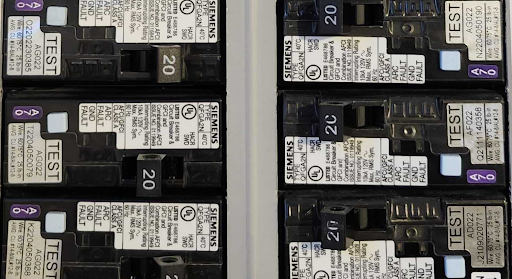
You were just hoping to replace a simple outlet, but now your electrician is telling you it’s going to cost more because your home needs something called an “Arc-Fault Circuit Interrupter.” This term sounds both intimidating and expensive, especially when it wasn’t even on your radar five minutes ago.
You’re not alone. According to the NFPA, over 47,000 home fires each year involve electrical failure or malfunction. The CPSC estimates that more than half of those could have been prevented with arc fault protection. But what exactly is an AFCI, and how do you know if your home has one?
At Integra Electrical, we’ve worked in more than 30,000 homes across the Des Moines area, and we see this question come up almost daily.
In this article, we will break down:
In this article, we’ll break down:- What an AFCI is
- Types of AFCI Protection
- Where is AFCI required in your home
- How to tell if you have AFCI protection
- What to do if you do not have AFCI protection
What is AFCI?
An Arc-Fault Circuit Interrupter (AFCI) is a safety device that automatically shuts off electricity when it detects arcing — a dangerous spark caused by damaged, loose, or deteriorating wiring. These arcs can generate intense heat and start fires without warning.
AFCIs help prevent electrical fires by constantly monitoring your home’s wiring for these unsafe conditions. When a threat is detected, they cut power instantly — often before you’d even know there was a problem.
Having AFCI protection installed in your home means you're covered from one of the most common hidden causes of house fires, giving you both safety and peace of mind.
Types of AFCI Protection
There are a few ways AFCI protection can be installed in your home, depending on the wiring layout and your specific needs.
- AFCI Breakers: These are installed in your home’s electrical panel and provide circuit-wide protection. Unlike standard breakers, AFCI breakers detect dangerous arcing conditions anywhere along the circuit, even inside walls. They shut off power before a fire can start.
- AFCI Receptacles: Installed directly at the outlet, these devices extend arc-fault protection to the appliances and cords plugged into them. They're often used when panel access is limited or in remodel situations.
- Combination AFCI/GFCI Devices: These protect against both arc faults (which cause fires) and ground faults (which cause electric shock). Combination devices can be installed as breakers or receptacles, offering two layers of safety in one unit.
No matter which type is used, the goal is the same: to stop electrical hazards before they can harm your home or your family.
Where Is AFCI Required in My Home?
The National Electrical Code (NEC) requires AFCI protection in all new home construction. Especially in areas like bedrooms, living rooms, and hallways, where arc faults are more likely to occur.
If your home was built before these rules were adopted in 2002, you're likely grandfathered in. This means you're not required to upgrade your wiring unless certain changes are made. For example, if you're extending or modifying an existing circuit, such as adding new outlets, switches, or wiring, that work must meet the current code, including AFCI requirements.
Similarly, if you're replacing your electrical panel, the new panel and any affected circuits must comply with the latest standards, which may include installing AFCI breakers. Bottom line? Even if your home isn’t required to have AFCI protection today, it’s a smart safety upgrade.
How to Tell If You Have AFCI Protection
To check if your home has AFCI protection, start by opening your electrical panel. Look for circuit breakers with a "TEST" button and a label that says “AFCI” — this means the circuit is protected.
You might also have AFCI protection at the outlet level. AFCI receptacles have both "TEST" and "RESET" buttons and should be clearly labeled for arc-fault protection.
If you're not seeing these anywhere, there's a good chance your home doesn't have AFCI, especially if it was built before the 2000s. If you’re unsure, a licensed electrician can quickly confirm and explain your options.
What to Do If You Don’t Have AFCI Protection?
As mentioned, AFCI devices help prevent electrical fires by detecting dangerous arcing conditions — offering greater safety and peace of mind in your home.
The cost to install AFCI protection can range anywhere from $200 to $3,000, depending on a variety of factors. These factors might include:
- The type of device
- Whether it’s a replacement or a new installation
- The distance from the electrical panel
- Local code requirements.
Because every home is different, the best way to get a clear answer is to schedule a licensed electrician to check your system. If you're not sure where to start, check out The Top 5 Electricians in Des Moines to find a trusted professional in the Des Moines area.
In this article, we’ll break down:What an AFCI is
Types of AFCI Protection
Where AFCI is required in your home
How to tell if you have AFCI protection
What to do if you do not have AFCI protection
Ben Carpenter is the founder and President of Integra Electrical, a Class A Master Electrician, and licensed contractor with over 30 years of hands-on experience. Since 1993, he’s been dedicated to helping homeowners across Iowa with reliable, safety-focused electrical repairs—making homes safer, one job at a time.
Topics:

